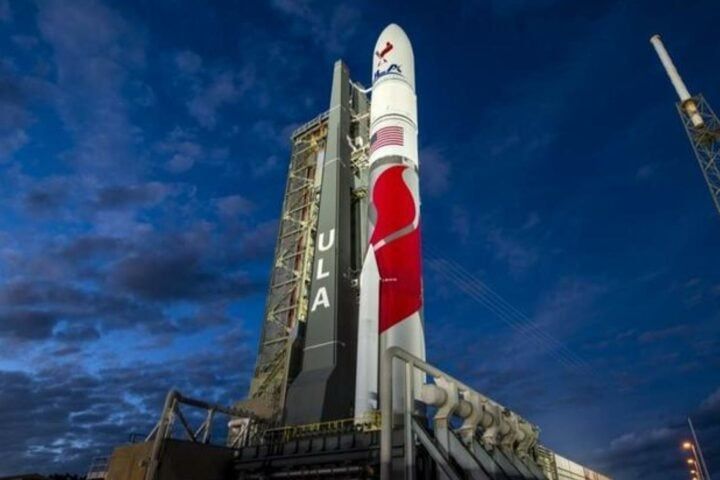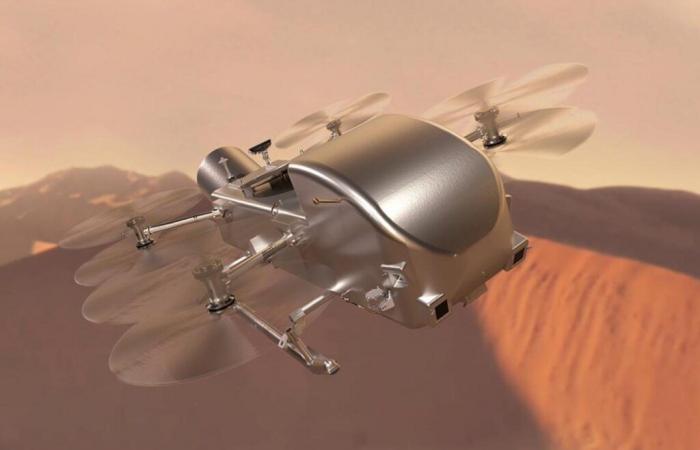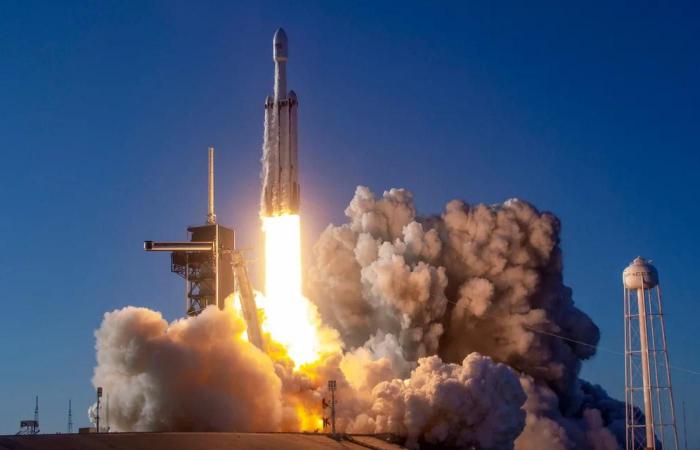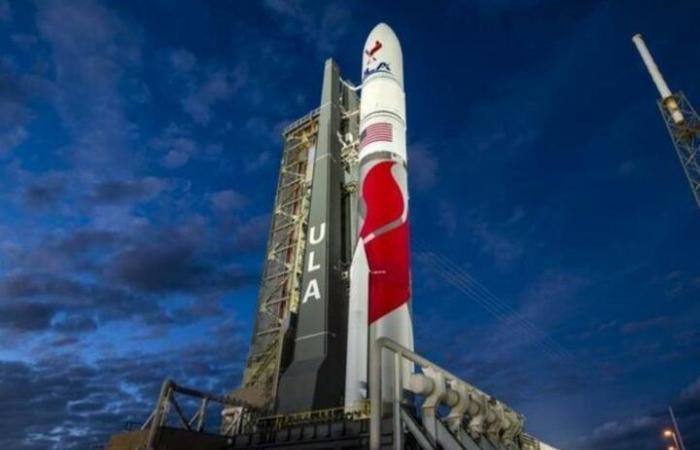Last January, NASA formalized the death of Ingenuity, the formidable little Martian helicopter which single-handedly launched a new era in the history of Martian exploration when it should have been nothing more than a simple proof of concept. But there’s no question of feeling sorry for yourself. The next generation is already underway, notably through the Dragonfly program, the objective of which will be to deploy a large nuclear drone on Titan, one of the most interesting moons of Saturn. The agency has just revealed the identity of a central player in this mission: SpaceX will be responsible for deploying this revolutionary machine.
An unparalleled machine for exploring Titan
The Dragonfly will be one of the most ambitious machines ever designed by humanity. For starters, it will be much, much bigger than little Ingenuity. While the latter weighed around 1.8kg, the Dragonfly's three-metre chassis will come in at over 400kg – a veritable monster in comparison. To fly, it will use not one, but eight distinct rotors which will allow it to carry a myriad of cutting-edge scientific instruments.
Thanks to this arsenal, will be devoted to the study of Titan, the second largest in the solar system behind Ganymede. It is an absolutely fascinating celestial body, particularly because we now know that it is very rich in water and organic molecules which play a central role in life as we know it on Earth.
Unfortunately, very little is known about this environment. The only device to have landed there, namely the probe from the Cassini-Hyugens mission, was unfortunately not equipped to detect biosignatures. A gap that NASA hopes to finally fill with the Dragonfly; its main mission will be to identify possible chemical traces associated with past or present forms of life as Perseverance, the sidekick of the late Ingenuity, continues to do on Mars.
Energy, a central issue
However, if it is already difficult to deploy a scientific rover on Mars, the logistics are even more intimidating when we are talking about a planet much further away than the Red Planet. The challenge will be to ensure that the Dragonfly can operate on site for as long as possible – but this is anything but obvious more than 1.4 billion kilometers from Earth. Because at this distance, it becomes very difficult to power a vehicle with solar energy.
For reference, a photovoltaic panel located on Mars is approximately 60% less productive than it would be on Earth, due to the greater distance that separates it from its energy source. This was already problematic for Ingenuity, which had to make do with flights lasting a few tens of seconds before having to spend a long time recharging its batteries. However, on Titan, the efficiency of the same solar panel would drop to around 1%! When we integrate the much higher energy consumption of the Dragonfly into the equation, the problem becomes almost insoluble… unless we exploit another energy source.
A delicate cargo
To fly to Jupiter's moon, this machine will not rely on solar energy. Instead, it will use technology previously reserved for surface rovers, such as Curiosity and Perseverance: a radioisotope thermoelectric generatoror RTG. This is a type of generator designed to exploit radioactive material, in this case plutonium 238. This fissile element has a half-life of 88 years; in theory, the 4.8 kg of plutonium carried by the Dragonfly will therefore allow it to fly for many years, unless a technical problem ends its adventure prematurely.
But launching this type of machine is anything but trivial. It goes without saying that NASA is not going to give a brick of plutonium to just anyone. Only a handful of certified machines, built by hand-picked companies, are eligible. for both security and technical reasons. Indeed, they must absolutely be exemplary in terms of reliability, and capable of self-destructing at a good distance to avoid radioactive contamination of the Earth.
However, all the launchers currently certified for the launch of such a sensitive load are either retired like the space shuttle, or at the end of their life, like ULA's Atlas V. It was therefore high time that NASA launched the certification process for new vehicles.
Two of them are currently in the running: the brand new Centaur Vulcan from ULA, but also the Falcon Heavy de SpaceX. In practice, it was therefore extremely likely that one of these two launchers would inherit the contract for the launch of the Dragonfly, and this was confirmed with NASA's latest announcement. In a recent post, the American agency announced that its choice had fallen on SpaceX; This revolutionary $3.3 billion machine will therefore set off to conquer Titan aboard a Falcon Heavy launcher.


This formalization also represents a major shift in the Dragonfly program. Now that the identity of the launch operator is known, everything will accelerate, because the different players in the program will be able to tackle the final phases of development. It will therefore be appropriate to keep an eye on this process until the launch planned for 2028, before the machine leaves for a long journey of 6 years which will undoubtedly give rise to one of the most fascinating space missions of the history. Ingenuity's legacy is assured!
???? To not miss any news on the Journal du Geek, subscribe on Google News. And if you love us, we have a newsletter every morning.









